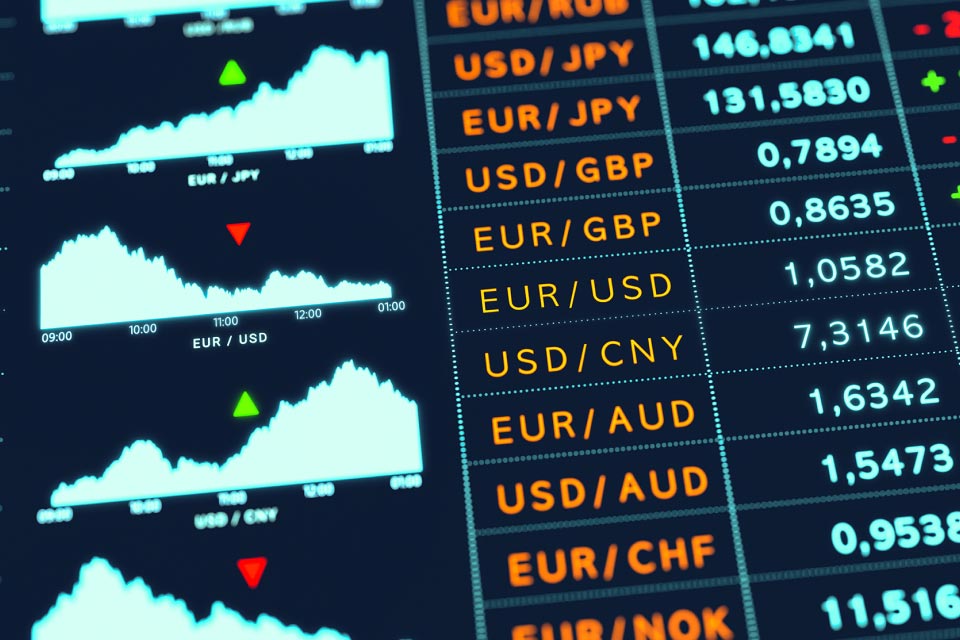Identifying market trends in forex is also helpful in understanding if your trading strategy is going as per plan and where you can improve. In our article, we take a look at how you can identify a trend in the forex market.
What is a forex market trend?
A forex market trend refers to a specific movement of the currency pair prices in a particular direction over a period of time.
- When the currency pair prices make continuous highs in the market, it is termed an uptrend and signals traders to place long orders.
- When they make continuous lows, the trend is termed a downtrend and signals traders to place short orders.
- When the currency pair prices fail to follow a particular direction in the market, the market is said to be in a sideways trend and does not send any particular signal to the traders.
Types of forex market trends
Major trend
A major or primary trend is a forex market situation when the currency pair prices move in a dominant direction over a long period of time, either upwards or downwards. Such a trend lasts from anywhere between several months to years. This type of trend is useful for position traders to place orders that last long and reap long-term gains.
Minor trend
A minor trend occurs for an extremely short period, typically lasting from a few minutes/hours to a full trading day. Such trends help intraday traders and scalpers in making short-term gains.
Intermediate trend
An intermediate or secondary trend occurs between major trends. The market moves in a certain direction over a short period of time between a major trend. For example, let us consider a market that has been trending in the upward direction for the last year. Let's assume suddenly, due to a news event, it suddenly goes through a bearish trend that lasts for a month. Soon after, the market starts increasing again. The sudden bearish trend will be termed an intermediate trend. Such trends are useful for medium to long-term traders to trade in favour or against the market and make profitable entries or exits.
How to identify trends in the market
Visual inspection
Visual inspection involves looking for consecutive price tops or bottoms that indicate an ongoing market trend. When prices make consecutive higher highs and higher lows, it indicates a bullish trend and signals traders to place long orders as prices are expected to rise further. When prices make consecutive lower lows and lower highs, it indicates a bearish trend and signals traders to place short orders as prices are expected to fall further. Visual inspection also includes using technical indicators like Moving Averages, Bollinger Bands, Moving Average Convergence Divergence and more with the price chart to spot existing market direction/trend.
Combining different indicators
Another way to spot confirmed market trends in the forex market is by combining different technical indicators. The combination of indicators helps in receiving more accurate signals because when more than one technical indicator confirms that the market is in an uptrend or downtrend, it is more likely that the prediction is accurate. Price actions can also be combined with technical indicators to confirm the market direction. For example, when the currency pair is making higher highs in the market, and the moving average confirms an uptrend, it confirms that the market is moving in a bullish direction.
Highs and lows
The market’s trend direction can be identified by spotting the highest and lowest price levels. Swing highs in the forex market refer to the price level where the currency pair prices reach their peak before a reversal. On the other hand, swing lows refer to the price level where the currency pair price reaches its lowest before a reversal. When the currency pair price reaches its highest price level over a period of time, the current trend is an uptrend which is soon to be followed by a downtrend and hence indicates traders to place short orders due to the bearish reversal. When the currency pair price reaches its bottom-most level, the current trend is a downtrend which is soon to be followed by an uptrend and hence indicates traders to place long orders due to the bullish reversal.
Clustering price levels
Clustering price levels refer to a situation when the currency pair price trends around a particular key price level over a period of time. A price cluster most often occurs around the resistance level during an uptrend and around the support level during a downtrend. When the cluster forms around the resistance level, it indicates a bearish market reversal trend and signals traders to place short orders. However, when the cluster forms around the support level, it indicates a bullish market reversal trend and indicates traders to place long orders.
Spot market trends quickly
You can spot market trends before they occur by studying the currency pair’s price chart closely. Start trading our forex trading platform and get a hold of several such techniques to predict and spot market trends well before time! Sign up for a live trading account or try a demo account.







